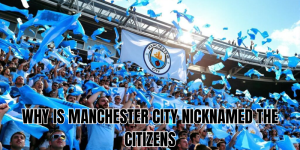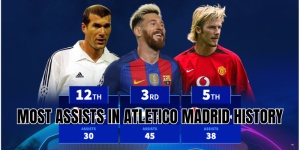The roar of thousands in red—what makes Manchester United’s supporters be known as the Red Army? The phrase echoes through stadiums, chants, fan forums, and media commentary. But its roots lie dee, and meaning to answer: why are Manchester United fans called the Red Army?
Origins: The 1970s and the birth of the “Red Army”
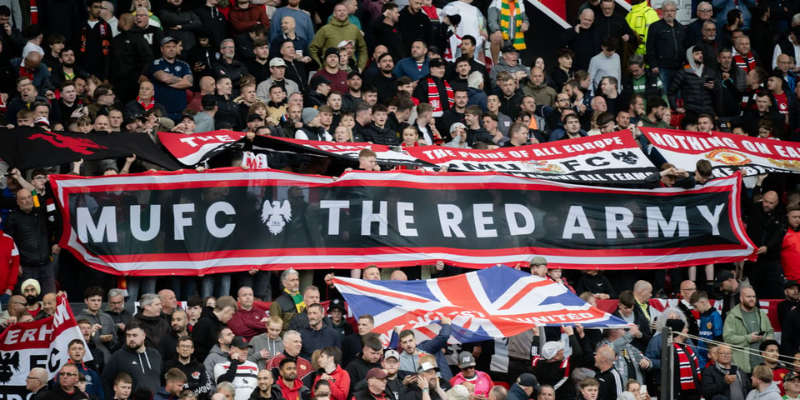
To understand why Manchester United fans are called the Red Army, you have to step back into the gritty terraces of 1970s English football.
In that era, football violence and hooliganism were widespread across England. Fans weren’t just spectators—they formed organized “firms” that sometimes clashed with rival groups. For Manchester United, one such firm emerged and became notorious for its size and aggression: the Red Army.
The name “Red Army” was first applied to the core, hardcore away-followers of United. These were the fans who traveled en masse to away matches, often in overwhelming numbers, sometimes even outnumbering the home fans at smaller grounds. Their presence was not just about support—it was a show of strength, solidarity, and intimidation.
A key moment came in the 1974–75 season. Manchester United had just been relegated to the Second Division, and matches in lower-tier stadiums became a battlefield for fans. The Red Army’s presence in stadiums around the country stirred chaos, prompting the authorities to introduce stricter measures like crowd segregation and fencing.
At its height, the Red Army was one of the largest hooligan firms in Britain. Sub‐groups emerged under its umbrella, including:
- Inter City Jibbers (ICJ)
- Young Munichs
- Moston Rats
- Men in Black (so called for their all‐black attire)
These groups were sometimes involved in organized crime beyond football violence—drug dealing, theft, and other illicit activity have been alleged in various accounts.
In short: the term Red Army began as a label for Manchester United’s hardened, often violent away fans in the 1970s, who acted as a metaphorical “army” to accompany the club wherever it went.
From Firm to Fandom: How the Name Spread
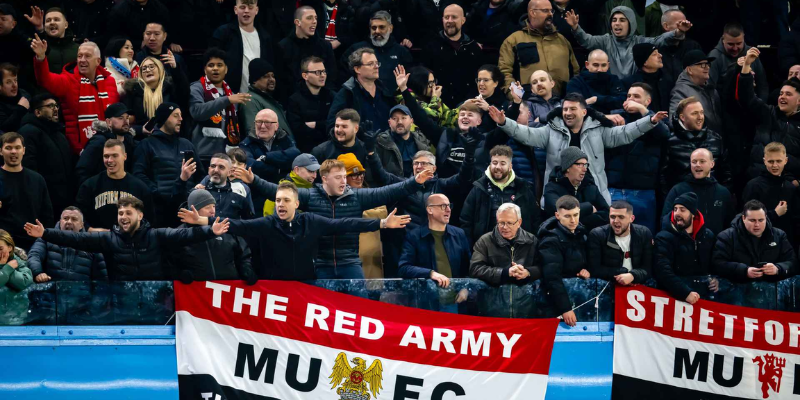
Over time, the term Red Army evolved beyond its original firm roots. It grew.
The decline of physical firm culture
As English football entered the 1980s and 1990s, tougher policing, stadium safety reforms, and sanctions against hooliganism began to curb violent excesses. The prominence of the firm-style Red Army diminished.
Yet the name had already embedded itself in fan culture. Younger generations of supporters, many removed, adopted “Red Army” as a badge of collective loyalty, not necessarily as an association with crime or violence.
The Red Army as inclusive identity
Today, when someone says “the Red Army,” it often simply means the mass of Manchester United supporters—the choir behind the club, whether at Old Trafford or abroad. It no longer exclusively refers to hooligan firm members (though that historical connection remains).
Inside Old Trafford, the club has formalized this identity with a dedicated stand section. The Red Army (TRA) section in the Stretford End seeks to restore vocal, unified support at home matches—an attempt to reclaim the passion (minus the violence) of an earlier era.
So the Red Army transformed from an underground force to a celebrated part of Manchester United’s cultural iconography.
Symbolism and meaning behind the name
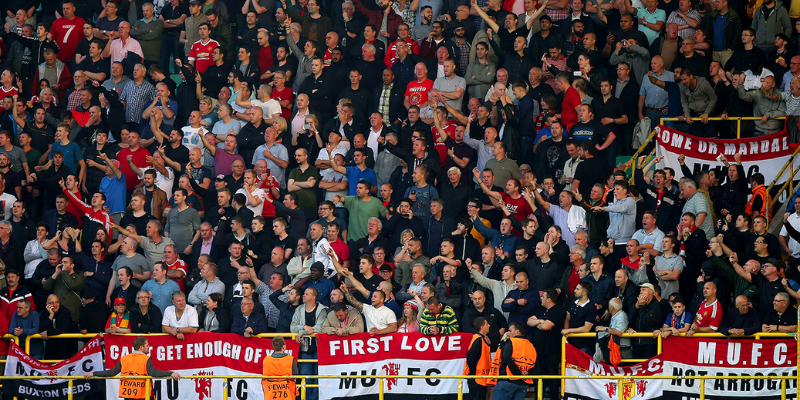
What is it about the word “Army” that resonated so deeply? Let’s unpack that.
1. Unity and numbers
An army moves as one. The Red Army moniker evokes mass movement, coordination, and strength in numbers—the image of thousands of fans traveling, chanting in unison, making their presence felt wherever United plays.
2. Devotion and sacrifice
Just as soldiers follow orders, these fans followed one club across cities and stadiums. The devotion required—time, money, risk—mirrors the dedication of troops to their cause. The idea of “standing by your troops” translates into standing by your club.
3. Psychological power
At its peak, the Red Army’s reputation was intimidating. Rival fans knew they faced a strong, organized opposition. That aura became part of the myth—support as a psychological weapon.
4. Color symbolism
Red is Manchester United’s identity. The “Red” signals immediate association; paired with “Army,” it becomes a rallying cry: the red masses united.
Key episodes in Red Army lore
To appreciate how legendary the Red Army name is, here are a few standout moments:
- 1974–75 rebellion: After relegation, Red Army supporters made their influence felt across smaller Second Division grounds, at times outnumbering home fans.
- Documentaries & media exposure: The Red Army’s clashes with rival firms were featured in films and series like The Real Football Factories and Hooligan documentaries.
- Modern home revival: The club’s implementation of the TRA section in the Stretford End aims to reignite atmosphere and associate the Red Army name with organized, positive support, not disorder.
These stories have passed into fan legend and social memory, cementing the Red Army as a core element of Manchester United’s mythos.
Common misconceptions and clarifications
Because the name has evolved, it’s easy to misunderstand or oversimplify its meaning.
- Not all Red Army = hooligan firm
- The modern usage of “Red Army” often refers to ordinary supporters, not members of the historical firm. Equating the terms is inaccurate and reductive.
- “Red Devils” vs. “Red Army”
- Manchester United’s official nickname is the Red Devils—a badge, crest, and marketing identity. “Red Army” is informal, fan-derived, and rooted in supporter subculture.
- Violence is not inherent to the name today
- While designed by the firm, contemporary references to the Red Army emphasize atmosphere, passion, and identity—not criminality.
How the Red Army identity thrives today
Though its roots lie in a wilder football era, the Red Army identity lives on in modern fandom. Here’s how it manifests:
- Fan branding & merchandise
- Scarves, t-shirts, banners and social media groups often carry “Red Army” branding, reinforcing community identity.
- TRA section in stadium
- The club-sanctioned Red Army (TRA) section gives young and passionate fans a focal point for vocal support at home games.
- Tributes in chants & media
- In chants, fanzines, podcasts, and forums, “Red Army” appears as shorthand for solidarity, loyalty, and heritage.
- Global outreach
- Overseas fan clubs, international branches, and digital communities adopt “Red Army” to signal alignment with United’s global supporter culture.
- Memory and storytelling
- The stories of clashes, road trips, and firm folklore live in fan books, oral histories, and club lore—passing the Red Army mythos to new generations.
Through these channels, Red Army continues to be more than a label: it’s a bridge between United’s historic identity and its modern global fanbase.
Final Thoughts
Why are Manchester United fans called the Red Army? Because it began as the name of an elite traveling hooligan firm in the 1970s, capturing unity, intensity, and dominance—and over time it transformed into a proud, wide-reaching identity for the broader fanbase.
Through waves of reform and changing football culture, the name survived, shedding much of its violent meaning and embracing the emotional heart of support. Today, “Red Army” means loyalty, mass voice, and belonging—embodied by chants echoing in stadiums, and current resonance of the Red Army name. Whether you’re a lifelong Red or a newcomer to United’s world, may this deepen your connection—and encourage you to wear the red, raise your voice, and stand among the Red Army yourself. GypsyGoal hope you like this article!



